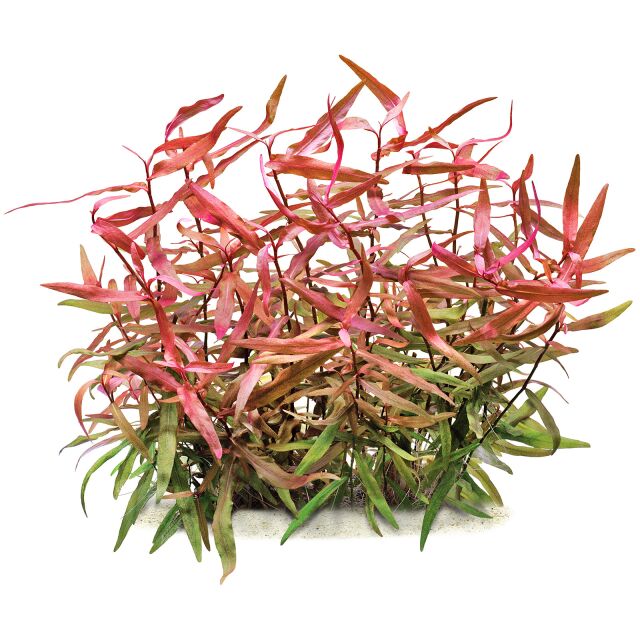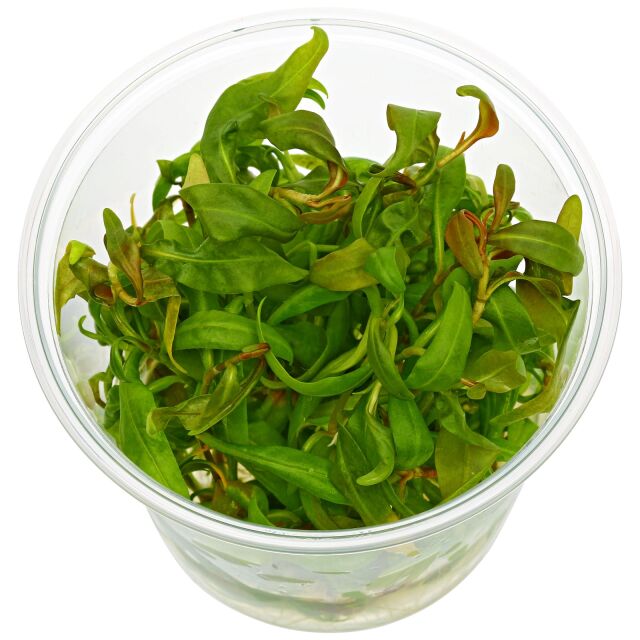


Persicaria sp. 2
- Reddish to violet tones
- Upright growth
- Also suitable for paludariums and Wabi-Kusa
Sign in or Register
Item question
We’re here for you!
Please enter your question and e-mail and we’ll contact you as soon as possible. It usually takes us up to 24 hours during business days to respond.
Thank you for your question!
Thank you, we’ll get in touch!
Close window
You already sent us a question.
Please wait a few minutes
Description
This splendidly coloured water knotweed came onto the market more than 20 years ago and was usually just called Polygonum sp. It has not yet been identified to species and probably originates from tropical Asia. Persicaria sp. 2 can grow above and below water. In the submerged form, the plant forms erect, branched stems, somewhat over 1 mm thick. The submerged leaves are about 7 - 10 cm long and 1 - 1.4 cm wide, with often somewhat wavy margins. Depending on the light intensity, the younger leaves develop olive-green to light reddish, orange-pink, strong pink to red-violet tones.
In the land form, the stems grow ascending and form a thicket of many shoots. The older stem sections lay down and take root at the nodes. The emersed leaves are medium green with a conspicuous reddish brown spot in the centre. Slender white to light pink flower spikes with very small flowers appear at the shoot tips.
Persicaria sp. 2 is moderately demanding. Like other aquarium knotweed, it should be well supplied with macro and micro nutrients, CO2 addition is also recommended, as is rather strong lighting. Growth is relatively fast. It is best to plant the stems a little apart from each other in a loose group. Propagation is by head and side shoot cuttings. If the stems are allowed to grow very long, they can become bare at the bottom and form many water roots. Such stems usually sprout again badly after a strong cutback. It is best to remove them completely and replace them with new head cuttings. The plant looks best if it is not allowed to grow much taller than about 30 - 40 cm.
Persicaria sp. 2 attracts attention with its varying olive-green, red to violet tones. It looks particularly beautiful as a free-standing group about 20 - 40 cm high in the middle ground of strongly lit aquariums. It is also suitable as an emergent plant for paludariums, wabi-kusa and open tanks. The lanceolate green leaves adorned with a reddish-brown spot have their own special charm.
General information
Please choose a variant to see more information.
| Item no. |
|
| EAN | |
| Weight | |
| Shipping weight |
Customers ask customers
You have questions about this product? Ask other customer or our support team about this product!